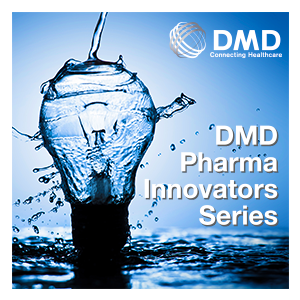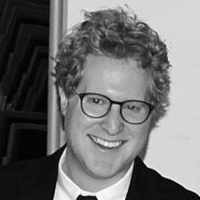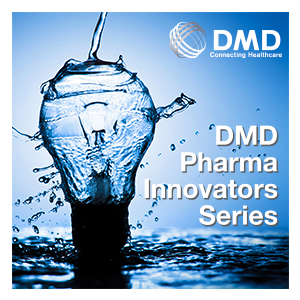

Graduating from medical school in 2013, Paul Kudlow faced two frustrating challenges that he realized cause many doctors to feel immense pressure: (1) keeping up with the over 8,000 new articles published every 24 hours, and (2) ensuring that your published research gets read by your target audience. Aiming to help rectify this problem, Paul co-founded TrendMD with Alan Rutledge and Dr. Gunther Eysenbach. In addition to his work at TrendMD, Paul is completing a PhD in the area of bibliometrics and content discovery from the Institute of Medical Sciences at the University of Toronto, and is currently on leave of absence from his medical residency.
As part of DMD's Pharma Innovators Series, David Reim sat down with Paul Kudlow, MD, CEO and co-founder of TrendMD, to discuss how scholarly publishers are using data from digital channels to help physicians discover new and relevant research. Read more about how content companies are using technology to reshape business as usual.
David Reim: Paul, what trends do you see among your clients in terms of managing and leveraging information?
 Paul Kudlow: Over the last year, I’ve seen a big emphasis on authentication. Authentication comes in all kinds of different forms, but what our publishers really want to know is who is reading their papers. Is it researchers? Is it doctors? What are their specialties? What were they reading before they came to the publisher’s content?
Paul Kudlow: Over the last year, I’ve seen a big emphasis on authentication. Authentication comes in all kinds of different forms, but what our publishers really want to know is who is reading their papers. Is it researchers? Is it doctors? What are their specialties? What were they reading before they came to the publisher’s content?
Reim: How invested are your clients in managing this data and in digital channels in general? Where are the gaps?
Kudlow: Digital channels are still a relatively new concept for scholarly publishers. Over the last 10 or 15 years, most doctors—including young researchers or even those in the principal investigator stage of their careers—have shifted to conducting research online.
At this point, around 8,000 peer-reviewed papers are published every day in biomedicine alone. That research is easily searchable, but search is only useful so long as you know what you’re looking for. The central problem is that because of the massive quantity of content, it's impossible for researchers, or doctors, or academics to have an ambient awareness of what is interesting to them, or what, potentially, could be useful to them.
That's where TrendMD fits in, because we're a channel that allows scholarly publishers to market their content direct to readers. Figuring out who reads what and where the readers are coming from is what really empowers the publishers’ decisions on which papers they do and don’t want to promote.
We're tackling that by monitoring the reading habits of these individuals. Our long-term vision is to become almost like an AI service that recommends papers based on highly contextual information, such as which patients a doctor just saw.
If you only see certain patients and only engage with certain literature, the recommender system will become so personalized that it doesn't give you anything else. You’ll get more of a siloing effect, which slows science down and limits innovation.
For example, if you have a patient with hypertension, you may not know all the different ways that similar patients may have been treated by other doctors. Recommender services are key for overcoming that because they allow you to tap into what other people are doing and what other treatments have worked for certain diseases.
Reim: Take me to 2020. Do you think that physicians will be consuming information in any ways that are different from today? If so, in what ways?
Kudlow: Discoverability and search services will continue to get better and better. One of the risks is that as recommendation systems get more personalized, they can actually reinforce the filter bubble. On the consumer side, the bubble is a problem because it amplifies your own opinions and doesn’t let you see other people’s views on various issues. It’s potentially an even bigger issue for medicine.
If you only see certain patients and only engage with certain literature, the recommender system will become so personalized that it doesn't give you anything else. You’ll get more of a siloing effect, which slows science down and limits innovation.
We’re trying to break free of that. It’s a challenge, because people engage on things that they like and companies are incentivized to present content that people will click on. Consumers may not like serendipity, so that you actually might have a dip in engagement rates if you're driving search results that aren’t personalized to them, even if it’s popular content.
We haven't solved it yet, but ultimately we want to drive serendipity, not the filter bubble. It's a fine balance between the two.
About TrendMD
 TrendMD is the leading content recommendation engine for scholarly content, which provides a means for serendipitous discovery of relevant content, created with the intention of connecting the right content to the right audience. TrendMD offers a simple and effective marketing solution to the problem of attracting new audiences and building an engaged readership for publishers, brands, and agencies. By providing relevant recommendations while readers are already in a research and content discovery mindset, TrendMD is able to deliver engaged readers throughout our network of over 3,300 journals from top publishers including Elsevier, AAAS, BMJ, Brill, and PNAS.
TrendMD is the leading content recommendation engine for scholarly content, which provides a means for serendipitous discovery of relevant content, created with the intention of connecting the right content to the right audience. TrendMD offers a simple and effective marketing solution to the problem of attracting new audiences and building an engaged readership for publishers, brands, and agencies. By providing relevant recommendations while readers are already in a research and content discovery mindset, TrendMD is able to deliver engaged readers throughout our network of over 3,300 journals from top publishers including Elsevier, AAAS, BMJ, Brill, and PNAS.
www.trendmd.com | Twitter: @TrendMD
Read the complete interview.


